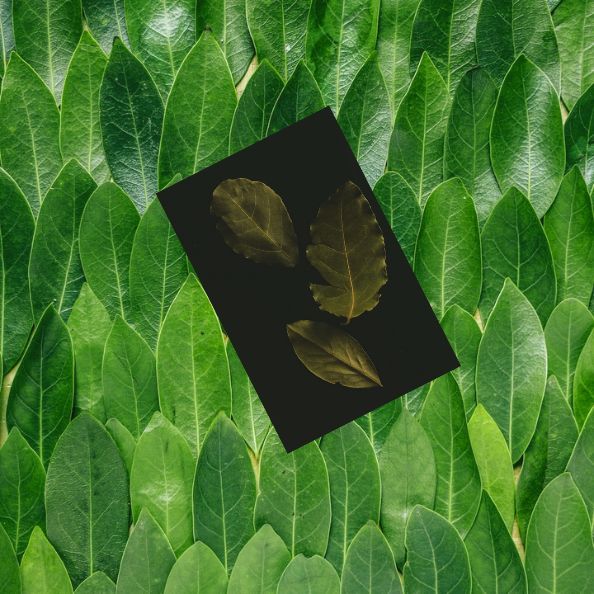Bay Leaves in Herbalism
Welcome to the intriguing world of herbal medicine 🌿 where ancient wisdom meets modern remedies. 💚
[**This post is part of a spin-off from a post on the Medicinal Garden Kit, your gateway to creating your own "backyard pharmacy" and healing oasis at home. 🌱
Watch out for our next post as we discover the healing powers of more herbs.
For now - sit back, relax, and embark on a journey of discovery with us.✨]
Origin and Physical Appearance
What are Bay Leaves?
Bay leaves, scientifically known as Laurus nobilis, are aromatic leaves derived from the bay laurel tree. Native to the Mediterranean region, these evergreen trees have a long history of use in herbalism.
Bay laurel trees can grow up to 40 feet tall and feature dark green, glossy leaves. The leaves themselves are elliptical in shape, with a leathery texture and a prominent midrib. They exude a strong, fragrant aroma when crushed or dried.
Growing Conditions
Bay laurel trees thrive in warm, temperate climates. They prefer rich, well-drained soil and require ample sunlight to flourish. They are commonly cultivated in Mediterranean countries and can be grown both in containers and on the ground.
*It's important to note that bay laurel trees are slow-growing and may take several years to reach maturity.
Chemical Properties and Benefits
Bay leaves contain various beneficial compounds that contribute to their medicinal and culinary significance. The essential oils present in bay leaves, such as eugenol, linalool, and alpha-pinene, give them their distinct aroma and therapeutic properties. These compounds possess antimicrobial, anti-inflammatory, and antioxidant properties.
Medicinal Applications
In herbalism, bay leaves are renowned for their diverse range of medicinal applications.
- They have been used traditionally to alleviate digestive issues such as indigestion, bloating, and flatulence.
- Bay leaves can be brewed into tea or infused into oils for topical application to treat skin conditions like acne and eczema.
- The leaves are also believed to have diuretic properties, aiding in the elimination of toxins from the body.
*Moreover, bay leaves have been associated with potential benefits for managing diabetes – Research suggests that the compounds found in bay leaves can help regulate blood sugar levels and improve insulin sensitivity.
However, it is essential to consult with a healthcare professional before using bay leaves as an alternative treatment for any medical condition.
Culinary Applications
Bay leaves are widely used in culinary practices across the world. They lend a subtle, earthy flavor to dishes and are often added to soups, stews, sauces, and marinades.
Bay leaves are typically used whole and are removed before serving, as they can be tough and indigestible. Their aromatic profile enhances the taste of various dishes, imparting a warm and slightly floral note.
Bay Leaves in Alternative Medicine
While the use of bay leaves in alternative medicine is widespread, it's important to note that scientific evidence supporting their efficacy is limited.
However, some studies have explored the potential health benefits of bay leaves.
*Research suggests that bay leaves may possess anti-inflammatory effects, making them potentially useful in managing conditions like arthritis and inflammation-related disorders.
Potential Side Effects and Interactions
When used in moderation as a culinary ingredient, bay leaves are generally safe for consumption.
- However, excessive consumption or direct ingestion of bay leaf essential oil can cause digestive discomfort and irritation.
- Additionally, individuals with allergies to other members of the Lauraceae family, such as cinnamon and camphor, may be more prone to allergic reactions to bay leaves.
- Bay leaves may also interact with certain medications, including anticoagulants and drugs metabolized by the liver.
*It is advisable to consult with a healthcare professional or a qualified herbalist before using bay leaves if you are taking any medications or have underlying health conditions.
Incorporating Bay Leaves into Daily Life and Herbalism
Bay leaves can be easily incorporated into daily life and herbalism practices.
- They can be purchased dried and stored in a cool, dark place for extended periods.
- A fragrant bay leaf tea can be prepared by steeping a few leaves in hot water for 10-15 minutes. This soothing herbal infusion can be enjoyed on its own or combined with other herbs for added flavor and therapeutic benefits.
In herbalism culture, bay leaves are often used in rituals and spells to promote protection, prosperity, and purification. They are also utilized as an ingredient in various homemade skincare products and essential oil blends.
It's important to source high-quality bay leaves from reputable suppliers to ensure their potency and purity.
*As with any herbal remedy, it is advisable to seek guidance from a qualified herbalist or healthcare professional before incorporating bay leaves into your wellness routine.
Embark on a holistic path toward improved health and vitality. 💚
If you want to explore even more about these and other treasures in herbal medicine 🌿 ...
Thank you for stopping by and reading along with us ...
Sourced from:
- Healthline - Bay Leaf: Benefits and Side Effects
- Verywell Fit - Bay Leaf Nutrition Facts and Health Benefits
Disclaimer.
When you purchase through links on our site, we may earn an affiliate commission (that's how we stay in business). FirstFewFinds may use affiliate links to products and services on retailer sites for which we can receive compensation if you click on those links or make purchases through them. We hope you find the list of our first few finds useful and helpful. Each product on our list has been carefully chosen by our writers and all opinions are our own. Check your choices and enjoy finding exactly what you need!








